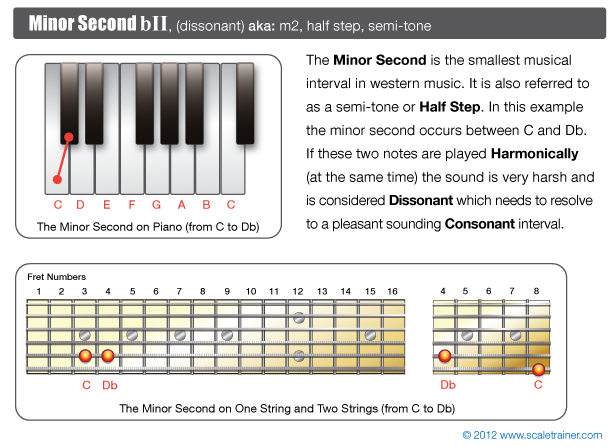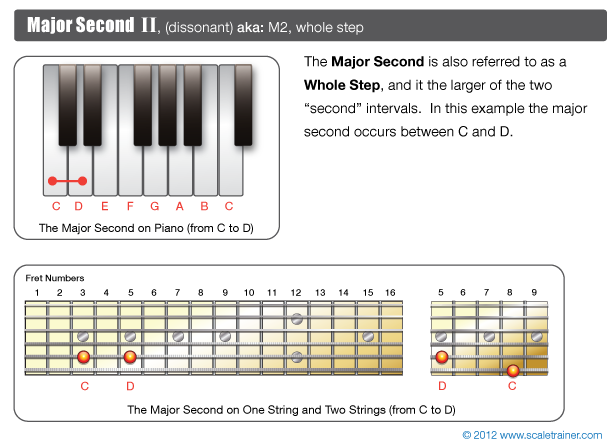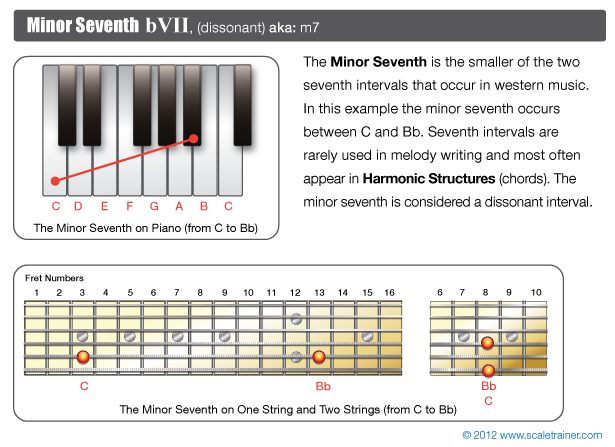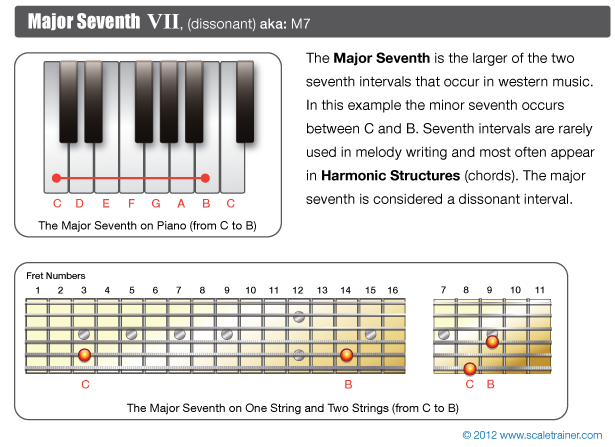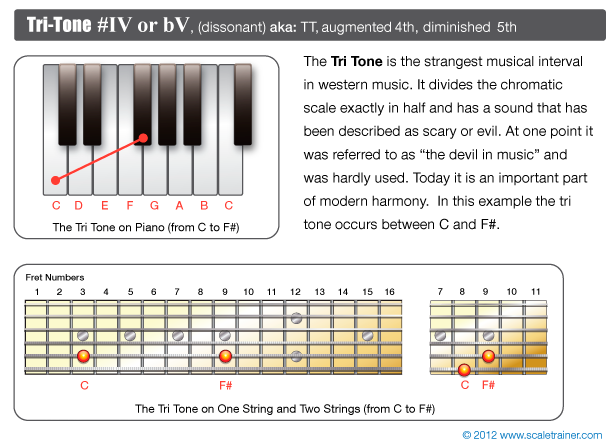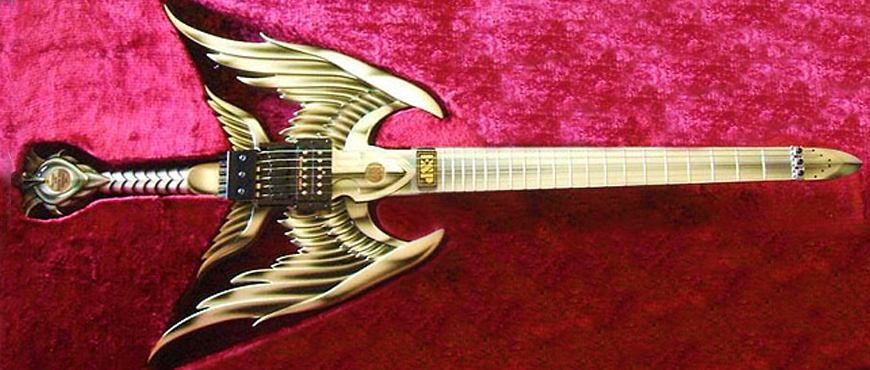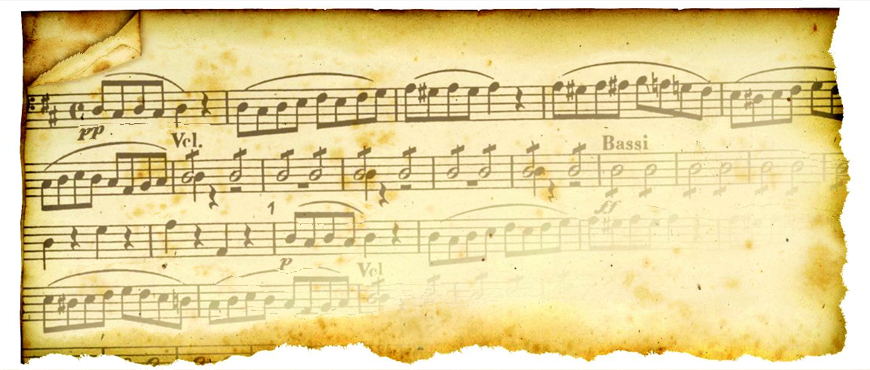
Intro to Musical Intervals
September 4, 2015
Consonant Intervals: 3rds & 6ths
September 4, 2015Dissonant Intervals: 2nds, 7ths, & The TriTone
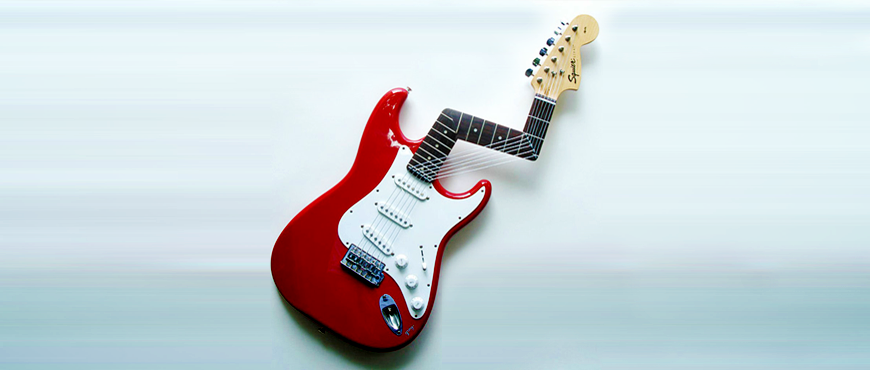
The distance between two notes is called an Interval. There are twelve notes in the chromatic scale which creates twelve possible intervals.
Let’s take a look at the most dissonant or harsh sounding intervals. They are the major and minor second; the major and minor seventh; and the tritone.
Each interval is shown as it appears on the piano. Then it is shown on the guitar neck in two ways.
- The first way shows the distance between the notes on one string.
- The second way shows how the interval would appear on separate strings. Try playing both notes at the same time to really get a feel for the sound they create together.

